Leaving Taiwan with a tinge of regret that I didn’t have more time there, I boarded my flight bound for the second leg of my summer trip in Japan. Osaka was my initial destination where I would meet Luke, a friend from my time in Changwon and one of my team mates in the football team I currently play for. Flying into Osaka Kansai airport is a unique experience in itself as you swoop down from the sky, narrowly clearing a steel bridge that connects the artificial man-made island to the outskirts of Osaka. Apart for the last few seconds of flight it appears you are about to land on water and I believe on a stormy day the spray from the waves would tickle a planes undercarriage. Heart in the mouth moment over and baggage collected I got on the first of my pocket lightening train journeys to Tennoji, a district in Osaka that was close to our first lodgings, Bonsai Guesthouse.
An impatiently hungry Luke was waiting for me and had been holding off on eating dinner for four hours as his flight from Korea had landed much earlier. Informing Luke of my lack of appetite didn’t go down well and after enjoying a welcome beer and a quick shower we headed out for some Japanese dinner with Jacob a Swedish guy that would grow suspiciously attached to Luke over the next few days….
We asked the guesthouse receptionist about good places to eat and headed to a local establishment that we would never have found if it wasn’t for the help of an incredibly kind young Japanese couple who, when asked for directions to where the restaurant was, turned around in the road and walked us through a myriad of ‘bladerunner’ style streets to the front door. Our menu for the evening was Okonomiyaki. We sat around a table with a hot grill plate in the middle. We opted for a set menu choice that Jacob ordered as Luke and I were pretty clueless. Okonomiyaki is a kind of “drunk-food” eaten socially at the end of the night. A bowl of noodles with batter, shredded cabbage, egg and a choice of meat content (squid, pork beef etc…) is upturned on the grill and cooked slowly much like a pancake. A thick soy sauce and mayonnaise is drizzled on top at the end. The Kansai region of Japan is said to be the origin of this dish and whilst appetizing for the locals it was less appealing to me, a man who avoids seafood and despises eggs. Anyway I ate some and Luke and Jacob seemed to enjoy it. It was definitely a new culinary experience and a trend that would follow throughout our time in Japan. Thankfully, for me, my appreciation of Japanese food would grow.
The following day would be our only full-day in Osaka. With Kyoto and Tokyo widely considered to be more enticing destinations in Japan we had scheduled for a short stay in Osaka. Many people who I spoke to before and after our travels gave short-shrift to Osaka but we found it to be quite a charming city.
We began a long, hot day of exploration at Osaka Castle. Osaka Castle is one of the country’s most famous castles and played a key part in the unification of Japan in the 17th century. We walked around the huge city park, gradually working our way up to the castle. The castle is surrounded by a huge moat that reflects the modern aspects of Osaka in the bright sunlight. Huge walls made from massive stone boulders fortify the outer grounds and the castle itself is distinctly Japanese styled. Being from England a land of many castles, where most castles lie in stony ruin, Osaka castle was exactly what you wanted a castle on the other side of the world to be like. We took some photos, hid from the fierce sun and left.
As we left, we stumbled across a large hall in the park where there were some Japanese Kendo fighters were training. A fortunate find and an interesting experience to watch. As the Kendo fighters trained they were attended to by friends or parents with cold water sprays to cool them in the heat they endured under the body armour, no such service for Luke and I. Later, as we left the park we came across some roller-bladers who had set up a ramp that one roller-blader was launching himself into the air from to a flat landing. His knees won’t last long!
Our next destination in Osaka was Shinsaibashi a commercial shopping district of epic proportions. The shopping and restaurant district was focussed under a covered arcade that seemed to never end; it must have been two kilometres long littered with discount shops, designer shops, trendy independent shops and some of Osaka’s eccentrically dressed youths. It’s culmination was an open area across a river where there was Pachinko parlors everywhere and large neon billboards. Pachinko is a national Japanese past-time. Players put small steel ball bearings into a mechanical machine not to dissimilar to a slot machine. They fire the balls around inside and as the balls fall through the pins and into holes you may win more balls or lose it. The idea is to collect as many balls as possible. You can then exchange your ball winnings into tokens or prizes. These tokens or prizes can then be exchanged for cash outside the Pachinko parlors in designated shops. This is simply a way of legally avoiding Japan’s strict gambling laws. The annual revenue for Pachinko in Japan is $378 billion. To put that figure into context, that is 4 times the annual profits of casino gambling worldwide… Pachinko parlors are noisy places and generally very smoky. When I returned to Osaka I walked past some in the morning that were yet to open but had queues of up to 30 people waiting to get inside!
After the enlightening trips to the castle and Shinsaibashi we walked down towards Osaka Tower. The area around Osaka Tower is a small but interesting entertainment area, restaurants, shops and a little youth culture. On our way we discovered a quaint and deserted little temple that would prove to be completely different to the larger more bustling temple of Shitenojji that we would pass on the final walk back to the guesthouse. We chose not to travel to the top of the tower but instead reward ourselves with a Kirin beer before heading to Shitenojji. Shitenojji was a very open, large and arguably unremarkable temple so I will leave the temple talk for Kyoto…
In the evening we had a Takoyaki party at the guesthouse that was kindly hosted by the amicable owners. Takoyaki are small batter balls that are filled with squid, ginger, tempura scraps and green onion and dressed with the same sauce that came on the Okonomiyaki. They are cooked in a specially shaped skillet and turned regularly with a wooden stick by the chef. I ate a few and thankfully the guests had some delicious salads and other finger foods that suited my palette better to fill me up. We spent some time getting to meet the other guests some of whom were working part-time at the hostel to subsidise their travels, a sleepy Australian who had barely left the hostel since we had been there, Luke’s new stalker Jacob, a lovely Dutch couple and my new apparent best-friend, the owners incredibly cute four-year old daughter, who wouldn’t leave me alone. I have never seen such an energetic and excitable kid. After a few drinks and watching an intermittent stream of the Community Shield we took an early night before we headed to the train station in the morning.

In Kyoto we navigated our way successfully to our hostel despite briefly heading in the wrong direction after exiting the subway station. We arrived shortly after lunch and immediately hit the streets of Kyoto. Planning to visit the temples the following day we headed towards a street market in the centre of Kyoto. We ate a cheap lunch and looked at the local delicacies offered by the street traders and Luke enjoyed a baby octopus that looked like it had been glazed in red candy. Better him than me.
As tea time approached we headed towards Gion a famous area in Kyoto that was close to our hostel. Gion is an area that contains traditional style Japanese buildings and restaurants. It is also famed for being one of the last places that geishas can be seen. The buildings are quaint and attractive, the food heavily priced and the geishas were sparse. In fact we only saw two and they appeared to be girls who had paid to be professionally dressed up and had the Geisha style make-up done for a private photo shoot. At this point we saw many women and men who were dressed in traditional Japanese dress of kimono. The kimono is still worn by people in Kyoto, sometimes because it is comfortable to wear and often by “maikos”. Maikos are young girls who are essentially apprentice Geishas. They serve and entertain in the private member restaurants that can be found in the Gion area. The service of a Geisha in olden times was an all-encompassing service (if you get my meaning?) but the modern Geisha is regarded as strictly professional. As they elevate themselves from the mark of maiko with age and training the geisha can be considered an expert in classical Japanese music, dancing, games and hospitality service.
In the evening we planned to find some tasty, affordable dinner but were thrown a curve-ball when it started to rain ridiculously. Standing under an awning at the beginning of the entertainment district we panicked and went in the worst Indian restaurant ever. Food fail. The soup was more reminiscent of peppered water and the curry more reminiscent of a bowl of soup. The hefty price tag made it a joke for the rest of the holiday that wherever we went we could not regret it as much as we did that moment of weakness forced by the rain. To add to our evenings disappointments we failed to find Kyoto castle and got caught out again on the way home and paid for an over-priced beer in a faux English pub as the weather punished us yet again.
The following day began in similarly disappointing fashion. We had planned to hire bicycles and tour Kyoto’s shrines, temples and other landmarks. Having dressed the part in out most suitable active clothing we walked outside to, you guessed it, rain. After briefly procrastinating we decided to take umbrellas that were freely provided by the hostel and walk around Kyoto. It meant we saw a little less than was possible but it worked out just fine.
Kyoto has around 2,000 religious places, 1,600 Buddhist temples and 400 Shinto shrines as well as palaces, castles and other significant landmarks. We walked all day and saw some amazing places. I think it is best to let the pictures tell the story of the temples as it is hard to understand as a non-religious man the significance of each temple or shrine, let alone remember their names. I think the best way to understand them is to watch the people who go there, not the tourists, but the people who pray and worship at the temples and shrines. Each temple had many buildings ranging in style and design, but all had their own individual focal points; a famous statue resembling a revered monk or a golden coated gate that protected the resting place of a significant person, for example.
Unfortunately, the Nijo castle was closed due to restoration work for a few days so our attentions were drawn to the Kyoto Imperial Palace. Despite guide books claiming that it was open to the public it, similarly to the Nijo Castle, appeared to be closed. The Emperor of Japan no longer resides here and his residence has since changed to the Imperial Palace in Tokyo but the Kyoto palace has been maintained and preserved. Despite not being able to enter, the awe of the complex is notable. As we walked through the surrounding park we came across a huge gravel path that led to the entrance. Roughly a football pitch wide and maybe three football pitches long this tree-lined gravel path leads up to an imposing wooden gate. The palace itself is not visible due to the incredible wall that completely surrounds it. Just the entrance and size of the gates and walls is enough to create the feeling that something important lies behind it and the vast entrance way serves to create the drama that you expect from a building that (despite being rebuilt eight times because of fire) has stood since the 12th century.
After another dinner fail (Luke had a tiny portion of noodles and I had some roast pork that turned out to be sliced sandwich pork on a little salad) we went to some bars that we had read about on the internet. (Although they were virtually impossible to find one of them was worth it because it turned out to be a cool little rock bar where I could order some spicy wedges!) Our main success of the evening was finding three beautiful maikos walking down one of the traditional streets. After hearing Luke’s persistent gushings about these girls and their style for the last two days I forced him to politely ask if we could take a picture with them. They graciously accepted and giggled away and we helped them take their own group photo which they had been trying to do before. They definitely seemed most excited in mine! Kyoto ended on a high note with a great souvenir photo. The culture and beauty of the city is unrivalled but I will also remember it for our comedy failings.



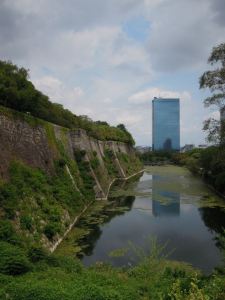

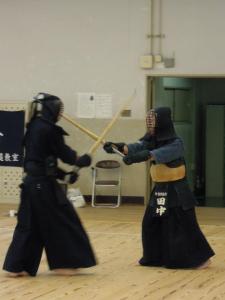
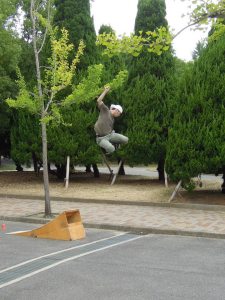







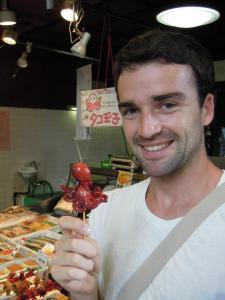

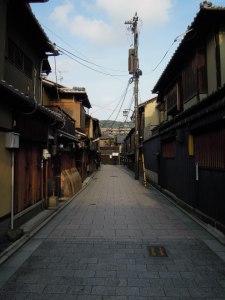


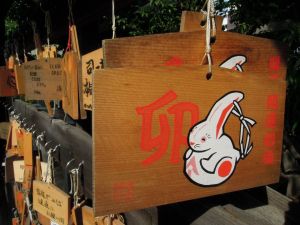



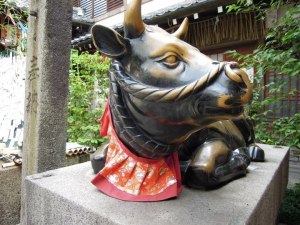





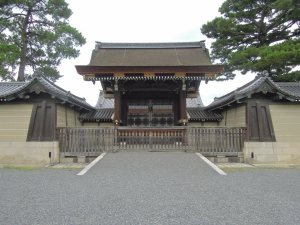


Recent comments